Your support helps us to tell the story
From reproductive rights to climate change to Big Tech, The Independent is on the ground when the story is developing. Whether it’s investigating the financials of Elon Musk’s pro-Trump PAC or producing our latest documentary, ‘The A Word’, which shines a light on the American women fighting for reproductive rights, we know how important it is to parse out the facts from the messaging.
At such a critical moment in US history, we need reporters on the ground. Your donation allows us to keep sending journalists to speak to both sides of the story.
The Independent is trusted by Americans across the entire political spectrum. And unlike many other quality news outlets, we choose not to lock Americans out of our reporting and analysis with paywalls. We believe quality journalism should be available to everyone, paid for by those who can afford it.
Your support makes all the difference.
India is finalising preparations for the largest gathering of people anywhere on Earth, the six-week Maha Kumbh Mela festival, which begins in the northern state of Uttar Pradesh on Monday.
More than 400 million pilgrims are expected to travel to the city of Prayagraj to bathe at the confluence of the three holiest rivers in Hinduism – the Ganga, the Yamuna, and the mythical and invisible Saraswati.
While the Kumbh Mela festival is ordinarly held every three years, rotating between several holy cities on the banks of these rivers, the Maha Kumbh Mela occurs only once every 12 years. Maha means “great”, and the event attracts the most devotees because it is considered the most auspicious and holy in the cycle.
The festival is rooted in the Hindu belief that the god Vishnu seized a pitcher containing the nectar of immortality from demons and drops of it fell to Earth at the site of the holy cities.
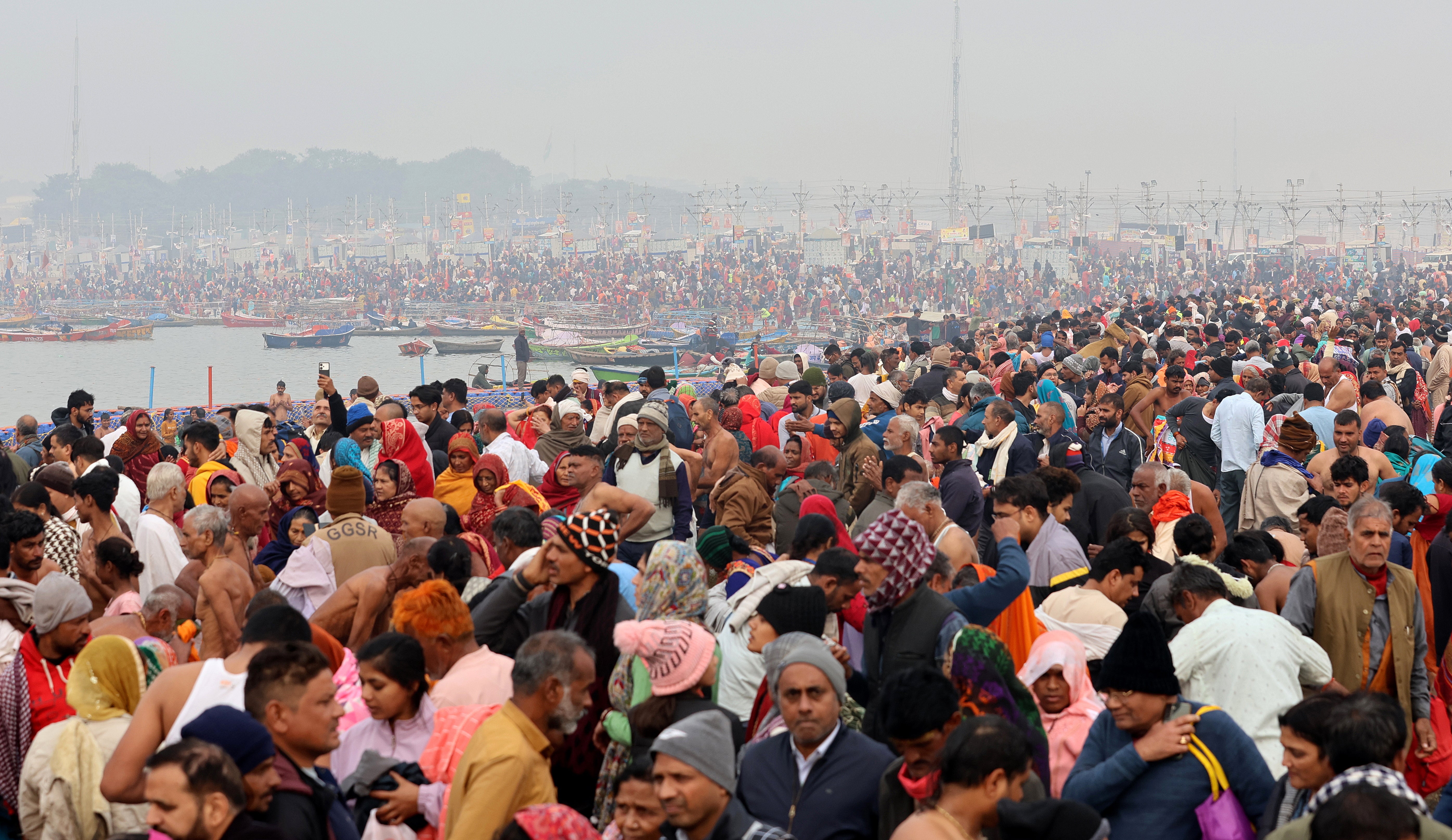
Hindu devotees believe taking a dip in the confluence of the rivers during the Maha Kumbh Mela absolves them of sins and brings them salvation from the cycle of life and death.
There are references to the festival in ancient Hindu texts as well as in works of travellers visiting the city from other kingdoms. The 7th-century Buddhist Chinese traveller Hiuen Tsang mentions the bathing rituals at the junction of the rivers when he visited Prayag city in AD644.
The numbers behind the festival are staggering, beyond the headline figure of 400 million expected attendants. Authorities have created a new tent city to house visitors that spans 4,000 hectares of land along the banks of the rivers.
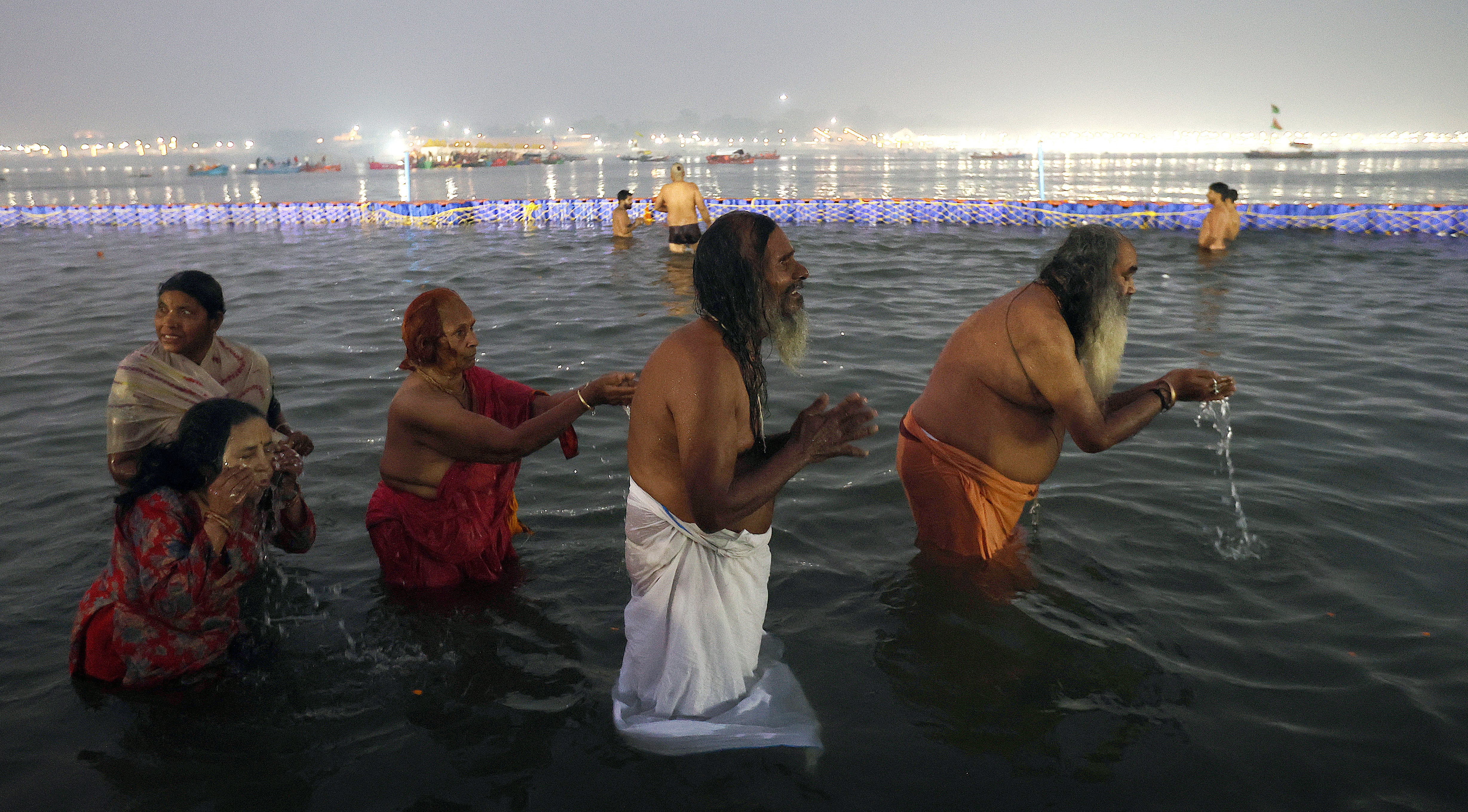
More than 150,000 tents have been set up on this land, equipped with 3,000 kitchens, 145,000 restrooms and about 100 car parks. Hundreds of thousands of new electricity connections have also been laid as the festival is expected to drain more power than what is consumed in a month by 100,000 urban apartments in the region.
Nearly 100 special trains have also been added to schedules, set to make 3,300 trips during the festival to transport visitors.
State police have also dispatched more than 40,000 personnel, as well as drones and cybercrime experts using artificial intelligence to surveil people. With so many people attending, the festival represents a significant test for authorities to organise and manage the movement of millions. Stampedes are not uncommon at the festival, and 26 pilgrims were killed in one at the last Maha Kumbh Mela in 2013.
More than a hundred road ambulances, seven river ambulances and air ambulances are also reportedly being readied as part of emergency response capabilities.
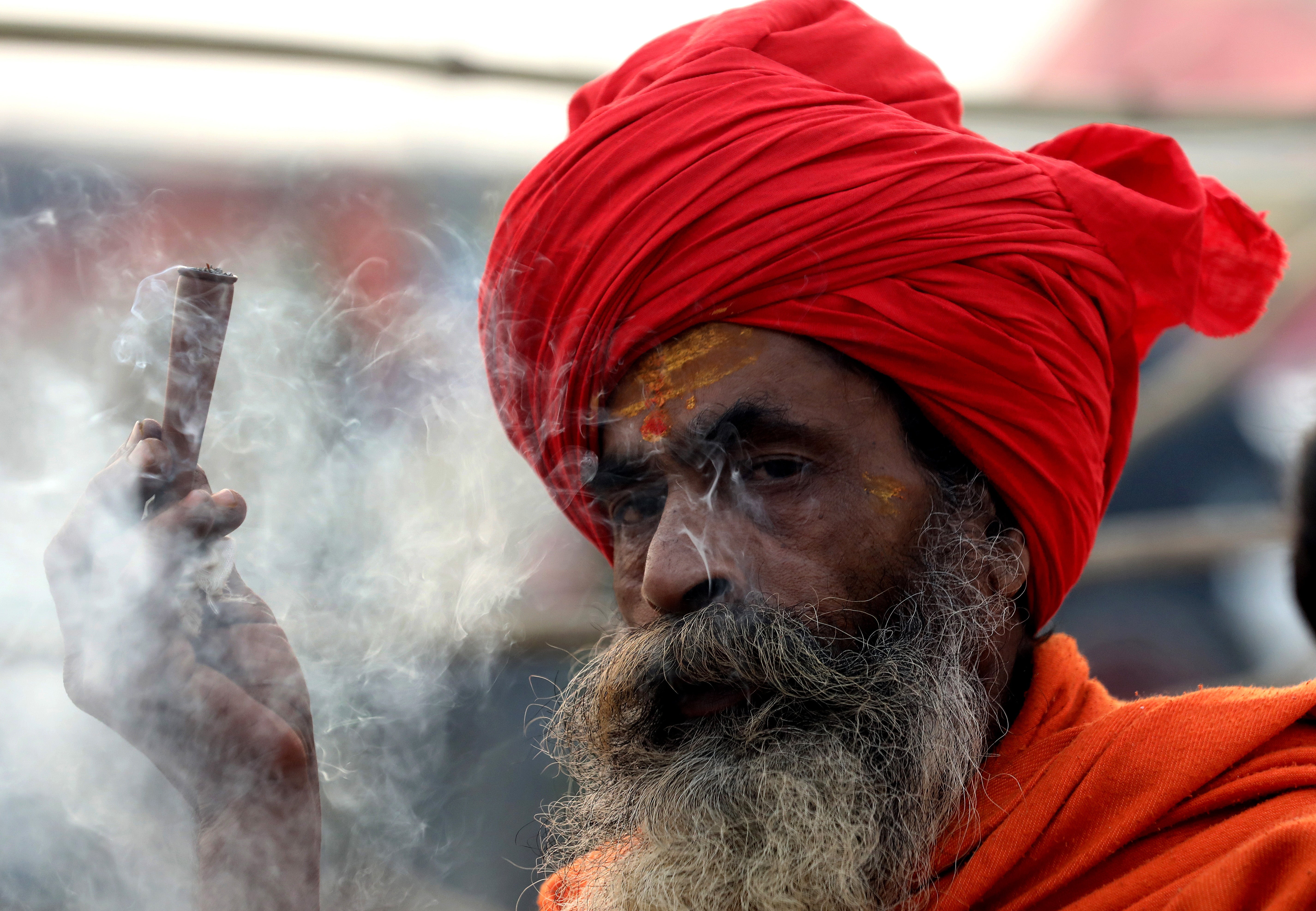
Officials say about $765m (Rs 64 bn) has been allocated by the state government to conduct this year’s event. “Security and safety of pilgrims is our priority,” UP police chief Prashant Kumar said.
Hindus from across India and the world travel to the Maha Kumbh every 12 years not just to partake in festival rituals, but also to see the thousands of saffron-clad saints and hermits and to take a dip themselves in the rivers at near-freezing temperatures.
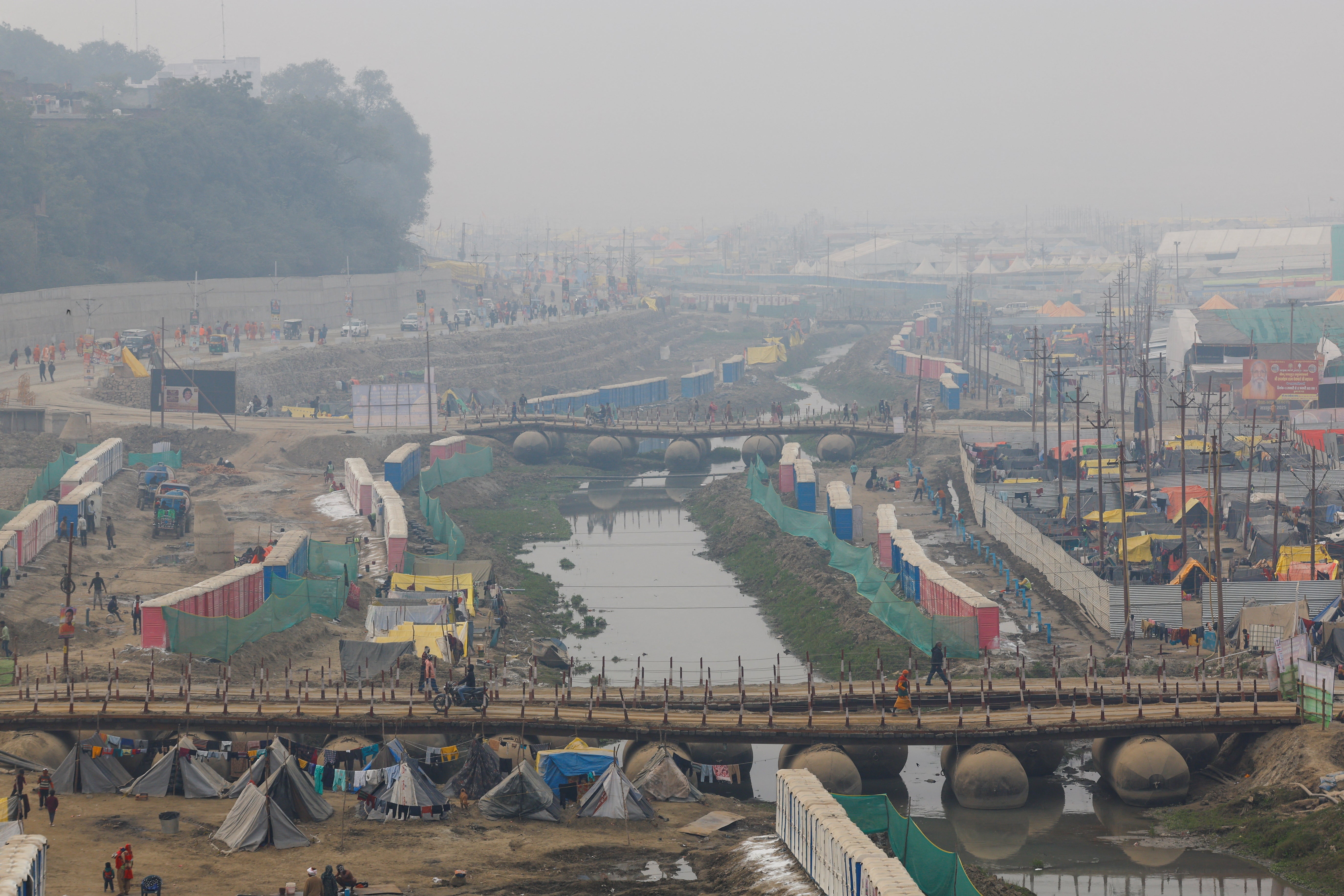
Successfully conducting the festival would be seen as a shot in the arm for the ruling Hindu nationalist BJP government at both the state and the national level.
The state’s chief minister Yogi Adityanath is a hardline Hindu monk who told local news that he is “fortunate to host one of the most auspicious Hindu festivals” in his state.
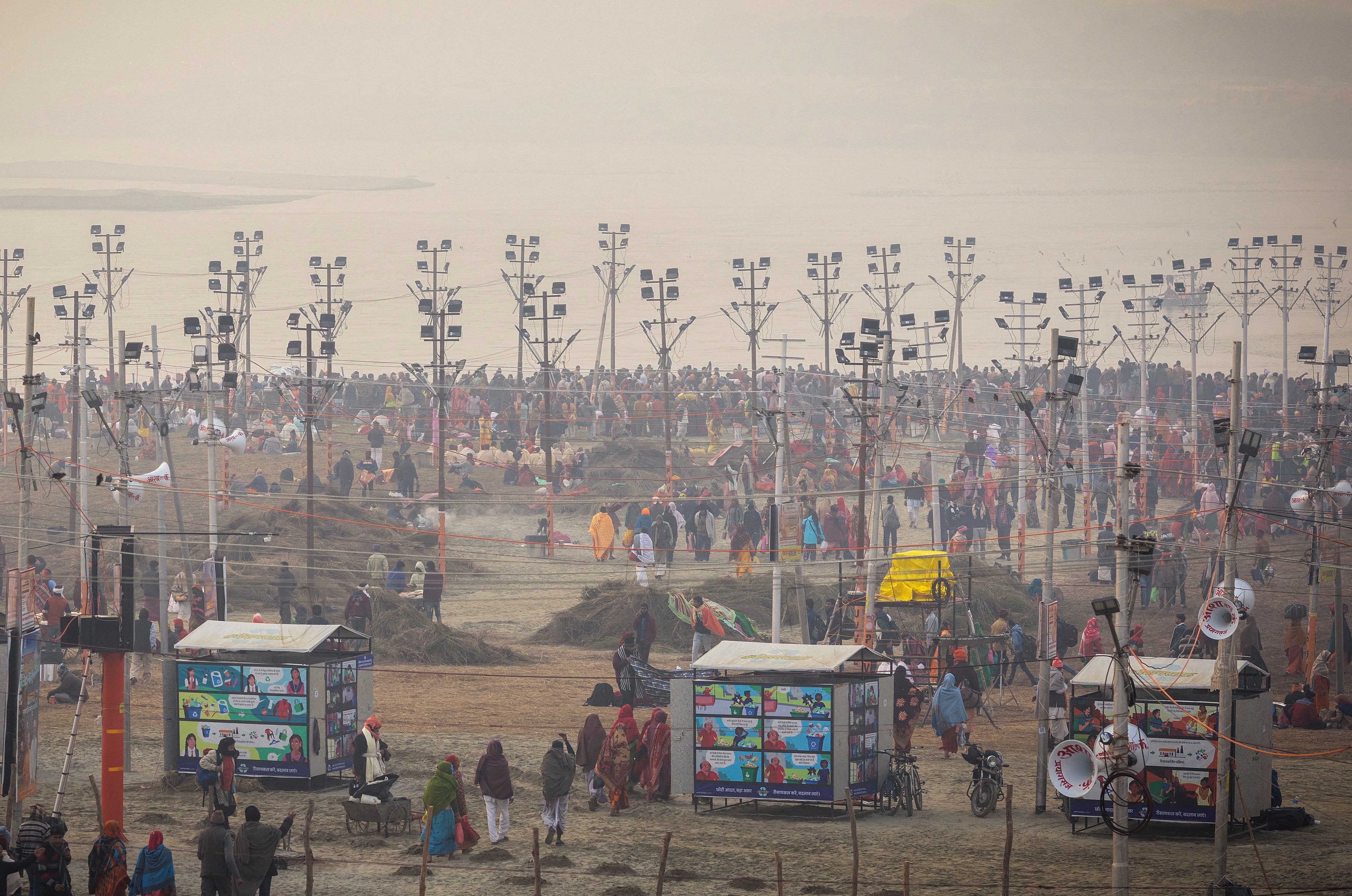
In 2021, prime minister Narendra Modi’s government refused to call off the Kumbh Mela even as Covid-19 infections rose to record levels across the country and millions gathered in Uttar Pradesh without masks or social distancing.
The decision to conduct the festival despite widespread fears and criticism of the gathering turning into a super-spreader event was seen by critics as a move to appease religious leaders in the Hindu-majority country.

